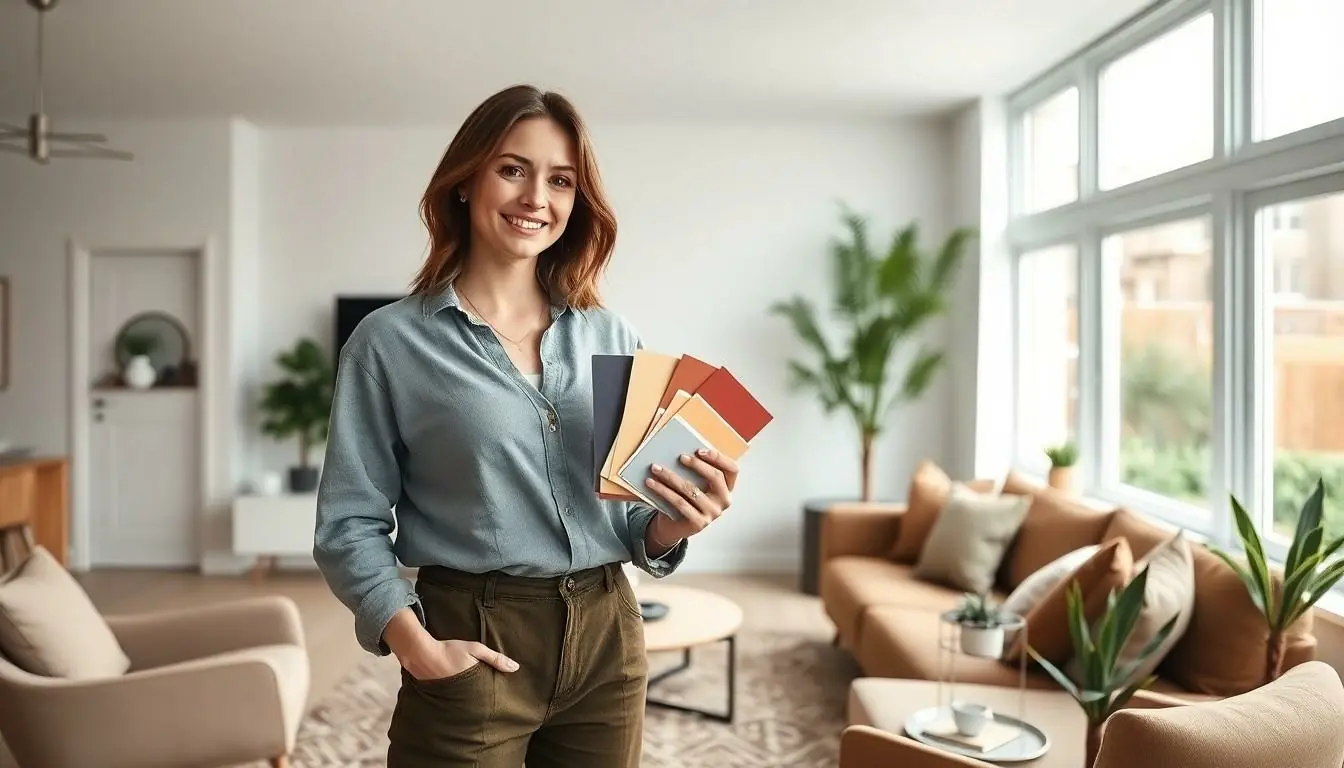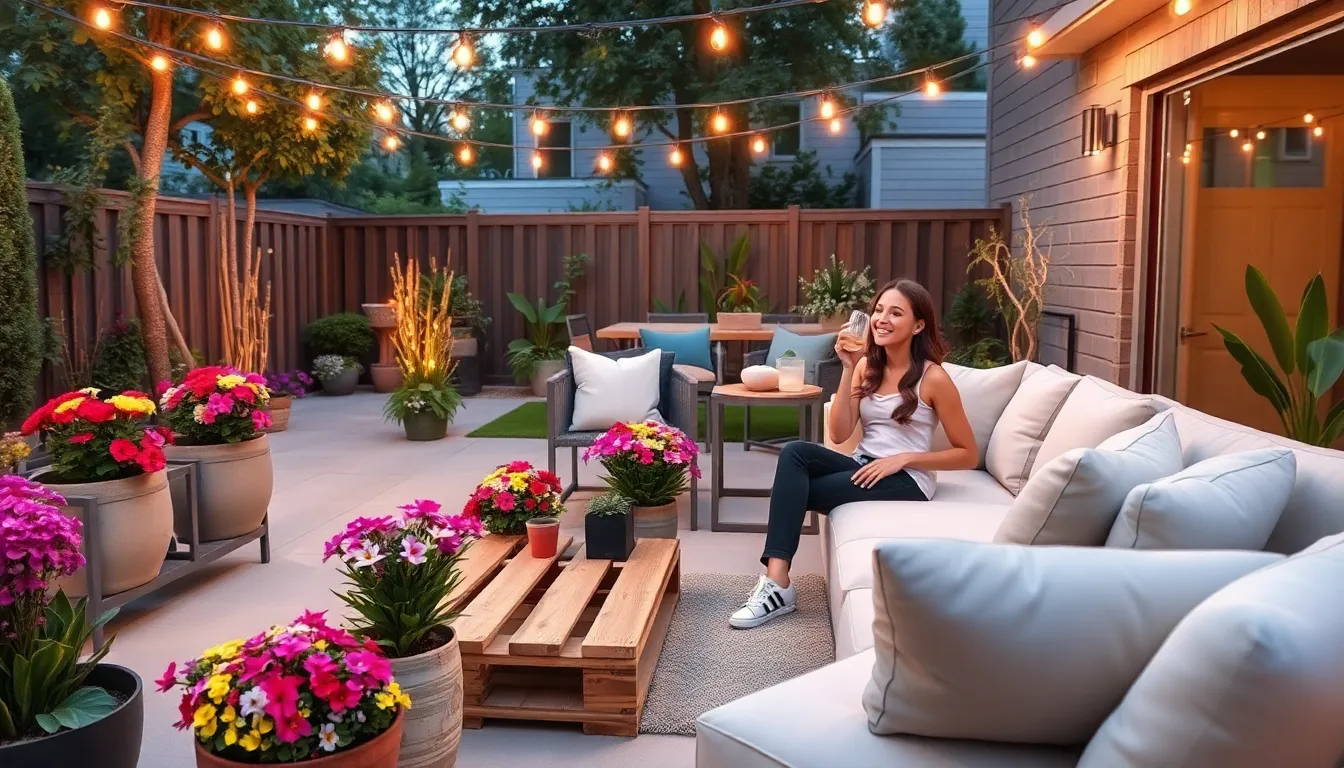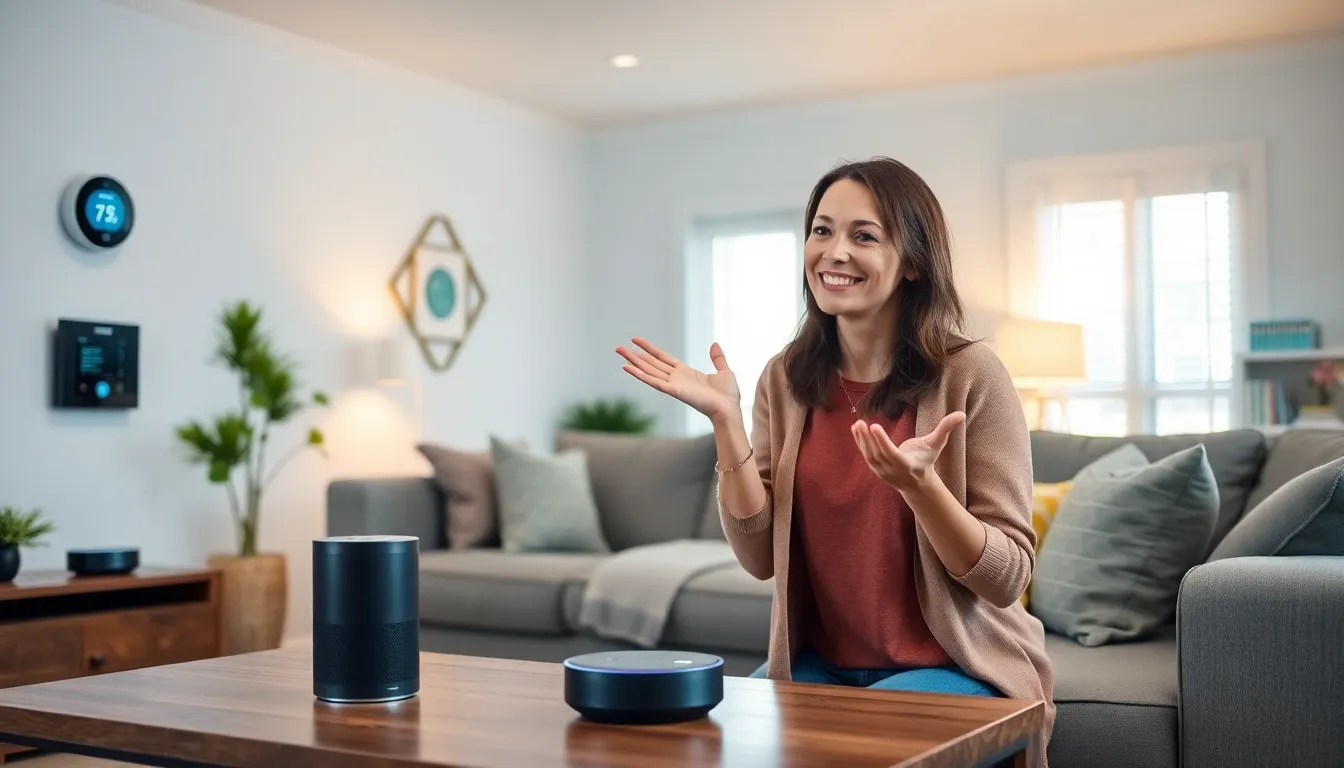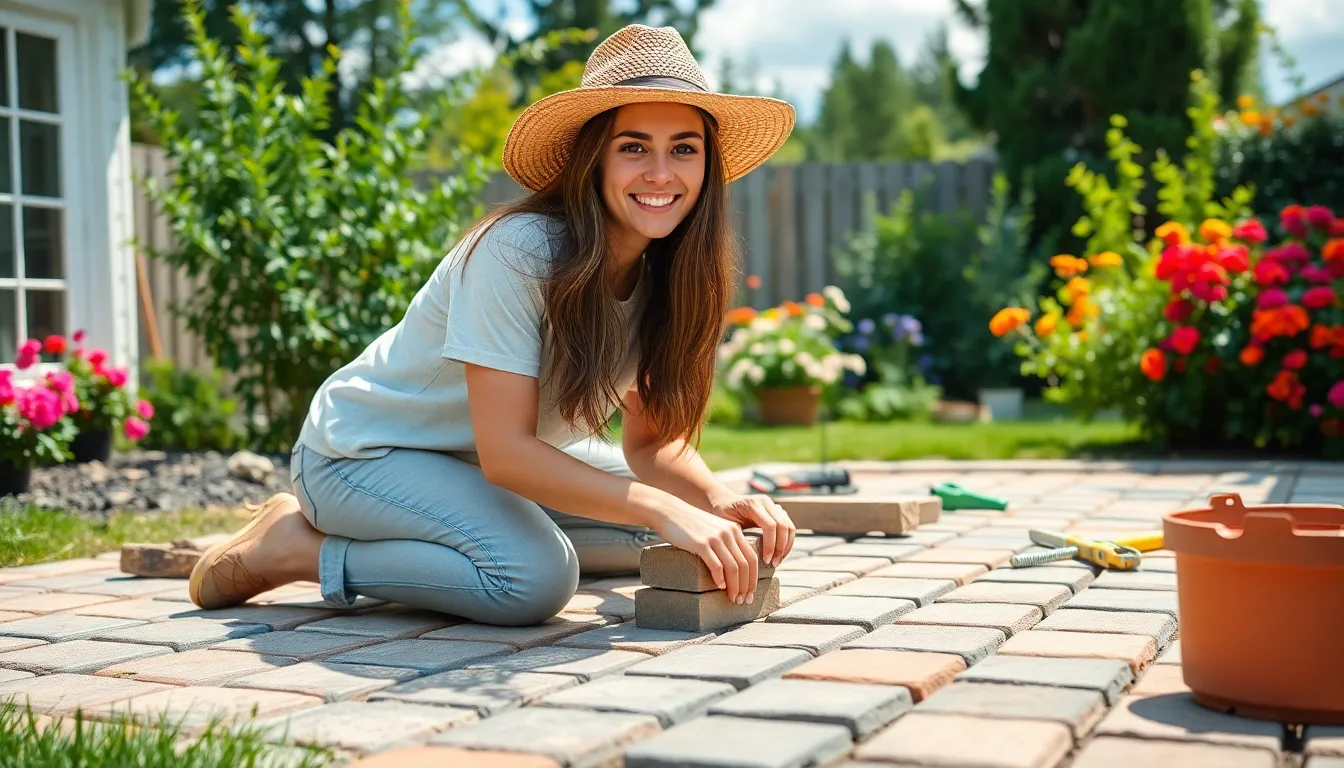Home design trends are like fashion—what’s in today could be out tomorrow. But unlike that questionable neon windbreaker from the ’90s, some trends are worth embracing. As homeowners look to create spaces that reflect their personalities and lifestyles, the design world is buzzing with fresh ideas that blend style and functionality.
Table of Contents
ToggleOverview of Home Design Trends
Home design trends continually evolve, reflecting societal shifts and advancements in technology. Current trends emphasize minimalism and functionality, characterized by open spaces and versatile furniture. Sustainability plays a significant role, with materials like reclaimed wood and eco-friendly textiles gaining prominence.
Color schemes now favor earthy tones, enhancing warmth and serenity within living spaces. Shapes and lines are trending toward geometric patterns, adding a modern flair to interior design. Smart home features, such as automated lighting and climate control systems, are increasingly integrated into new builds and renovations.
Outdoor living spaces are becoming essential, with homeowners seeking to blend indoor and outdoor areas seamlessly. This demand increases the popularity of features like sliding glass doors and outdoor kitchens.
Craftsmanship gains attention as well, with unique, handmade items becoming focal points in various rooms. Further, biophilic design, which incorporates nature into interiors, continues to grow, promoting wellness and tranquility.
Ultimately, staying attuned to these trends allows homeowners to create spaces that resonate personally while remaining stylish and functional.
Popular Styles in Home Design
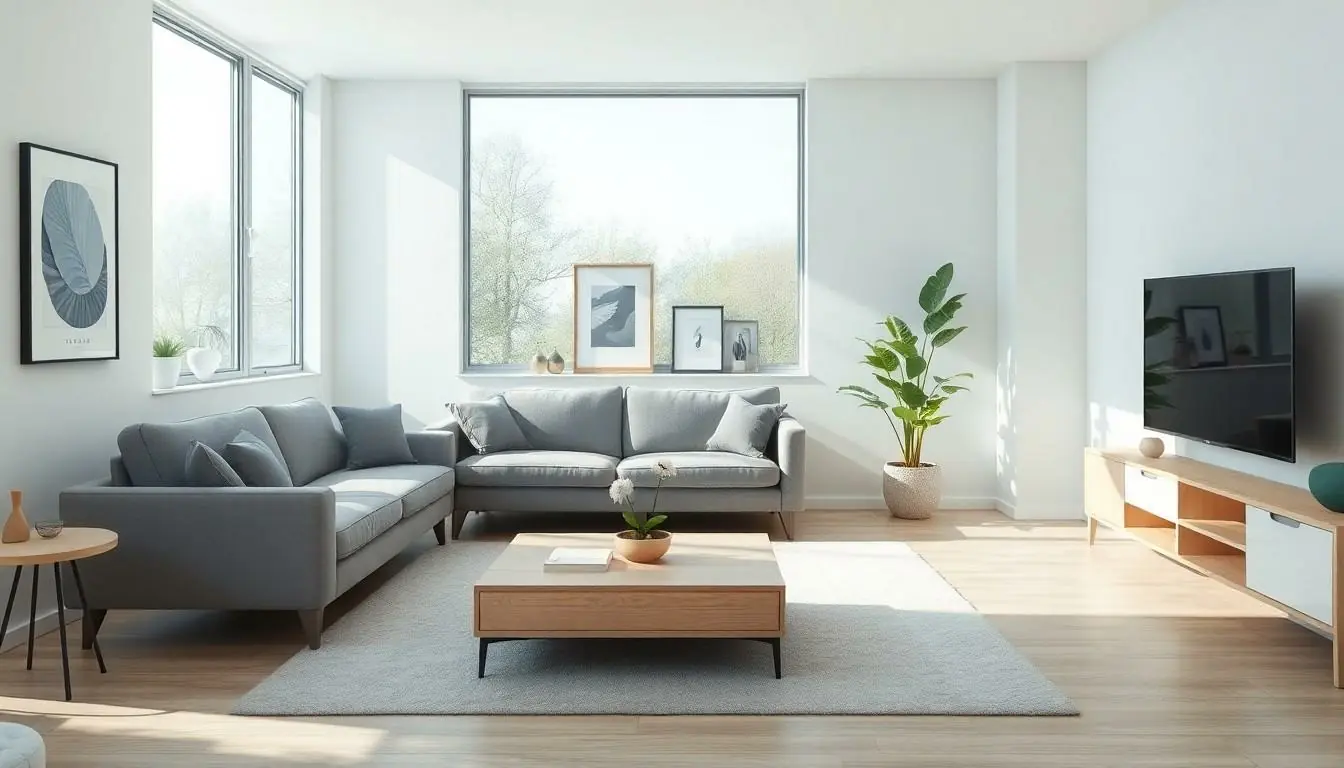
Home design reflects personal taste and current trends. Various styles emerge, each offering unique characteristics.
Modern Minimalism
Modern minimalism emphasizes simplicity. A focus on clean lines creates a sense of calm. Neutral color palettes support this aesthetic, with whites, grays, and soft beiges frequently used. Furniture choices prioritize function over form. Multi-functional pieces, like sofa beds and storage ottomans, enhance practicality in smaller spaces. Artwork and decor remain sparse, allowing the space to breathe. Open floor plans contribute to the airy environment often associated with minimalism. Incorporating natural light further enhances this style, inviting warmth into the home.
Rustic Chic
Rustic chic merges charm and comfort. It draws inspiration from nature, often featuring reclaimed wood and stone elements. Earthy colors saturate this style, providing warmth and a cozy ambiance. Textiles made from natural fibers, such as linen and cotton, add depth and texture. Vintage furniture pieces frequently serve as focal points, reflecting history and craftsmanship. Decor items often include handmade ceramics and woven baskets. Additionally, greenery plays a crucial role, whether through houseplants or floral arrangements. The combination of these elements fosters an inviting atmosphere, perfect for relaxation and connection.
Color Palettes and Materials
Color palettes and materials significantly impact home design trends, shaping new aesthetics and functional spaces for homeowners.
Trending Colors for 2023
Earthy tones dominate the 2023 color trends. Rich shades of terracotta, deep greens, and warm neutrals provide warmth and a sense of calm. Homeowners increasingly favor muted pastels as well, offering a subtle touch of color. Jewel tones like emerald and sapphire also see rising popularity, injecting sophistication into interiors. Accent walls in bold colors enhance depth and character, creating focal points that attract attention. Designers emphasize mixing soft hues with striking colors to achieve balanced yet dynamic results, contributing to an inviting atmosphere.
Sustainable Materials
Sustainable materials play a crucial role in modern home design. Reclaimed wood adds character while minimizing environmental impact, appealing to eco-conscious homeowners. Bamboo emerges as a popular choice due to its rapid growth and durability, offering a stylish yet sustainable option. Additionally, recycled metals and glass contribute to both the aesthetic and eco-friendly aspects of design. Organic textiles, such as cotton and linen, ensure comfort while maintaining eco-friendly principles. These materials not only enhance visual appeal but also reflect a growing commitment to sustainability in home design trends.
Innovative Technology in Home Design
Innovative technology drives modern home design, enhancing both convenience and sustainability. Homeowners increasingly integrate smart systems and energy-efficient solutions into their spaces.
Smart Home Features
Smart home features redefine residential living. Automated lighting systems allow homeowners to adjust brightness through smartphone applications. Security devices, such as smart cameras and doorbells, provide real-time monitoring. Convenient climate control systems enable precise temperature adjustments, improving comfort and energy efficiency. Voice-activated assistants facilitate hands-free operation of various devices, seamlessly integrating technology into daily life. These advancements enhance the user experience, making homes more secure, efficient, and responsive to individual needs.
Energy Efficiency Solutions
Energy efficiency solutions have become integral to modern design. Homeowners opt for energy-efficient appliances, reducing electricity consumption with models that use less power. Insulation materials, such as spray foam and recycled content, improve overall thermal performance. Solar panels contribute to sustainable energy production, offering homeowners reduced utility bills and environmental benefits. Efficient windows with low-emissivity coatings minimize heat loss, enhancing indoor comfort. These solutions not only lower energy expenditures but also promote responsible resource usage, aligning with current sustainability trends.
Outdoor Living Spaces
Outdoor living spaces have transformed into essential extensions of the home. Homeowners integrate these areas with features such as sliding glass doors and outdoor kitchens. These elements create seamless transitions between indoor and outdoor environments.
Patios, decks, and porches emerge as popular choices for cultivating outdoor comfort. They provide spaces for dining, entertainment, and relaxation. The trend emphasizes functionality alongside aesthetics, with durable materials like weather-resistant furnishings enhancing longevity.
Incorporating greenery enhances the overall vibe of outdoor areas. Gardens, vertical planters, and potted plants contribute to a refreshing atmosphere. Homeowners embrace biophilic design to foster a connection with nature, encouraging wellness and tranquility.
Lighting plays an important role in these spaces, offering both ambiance and safety. String lights, lanterns, and built-in fixtures illuminate outdoor settings beautifully. Homeowners often prioritize low-energy options, promoting sustainability while enhancing style.
Fire pits and outdoor heating solutions extend the usability of these areas into cooler months. Many now choose to create cozy outdoor living rooms, complete with comfortable seating and decorative elements.
Flexibility remains a key feature, allowing homeowners to adapt spaces for various activities. This adaptability supports year-round enjoyment and makes outdoor spaces a continual source of inspiration.
Overall, outdoor living spaces represent a blend of personal expression and functional design. They reflect current trends of connecting with nature while enjoying the comforts of home. Engaging thoroughly with these concepts transforms the way people perceive and utilize their living environments.
Home design trends are more than just fleeting fads. They reflect a blend of personal expression and evolving societal values. By embracing current trends like minimalism sustainability and smart technology homeowners can create spaces that are not only stylish but also functional.
The shift towards earthy tones and versatile outdoor living areas showcases a desire for comfort and connection to nature. As these trends continue to develop they offer endless possibilities for transforming homes into personalized sanctuaries. Staying informed about these trends empowers homeowners to make choices that enhance their living environments while also aligning with contemporary values.

